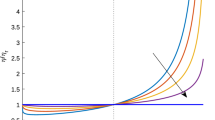Abstract
The stochastic dynamics of a well-stirred mixture of molecular species interacting through different biochemical reactions can be accurately modelled by the chemical master equation (CME). Research in the biology and scientific computing community has concentrated mostly on the development of numerical techniques to approximate the solution of the CME via many realizations of the associated Markov jump process. The domain of exact and/or efficient methods for directly solving the CME is still widely open, which is due to its large dimension that grows exponentially with the number of molecular species involved. In this article, we present an exact solution formula of the CME for arbitrary initial conditions in the case where the underlying system is governed by monomolecular reactions. The solution can be expressed in terms of the convolution of multinomial and product Poisson distributions with time-dependent parameters evolving according to the traditional reaction-rate equations. This very structured representation allows to deduce easily many properties of the solution. The model class includes many interesting examples. For more complex reaction systems, our results can be seen as a first step towards the construction of new numerical integrators, because solutions to the monomolecular case provide promising ansatz functions for Galerkin-type methods.
Similar content being viewed by others
References
Alfonsi A., Cancès E., Turinici G., Ventura B.D., Huisinga W. (2005) Adaptive simulation of hybrid stochastic and deterministic models for biochemical systems. ESAIM Proc. 14, 1–13
Anderson D.H. (1983) Compartmental Modeling and Tracer Kinetics. Number 50 in Lecture Notes in Biomathematics. Springer, Berlin Heidelberg New York
Burrage, K., Tian, T.: Poisson Runge–Kutta methods for chemical reaction systems. In: Proceedings of the Hong Kong Conference on Scientific Computing, 2003 (in press).
Burrage K., Tian T., Burrage P. (2004) A multi-scaled approach for simulating chemical reaction systems. Prog. Biophy. Mol. Biol. 85, 217–234
Cao Y., Gillespie D., Petzold L. (2005) The slow-scale stochastic simulation algorithm. J. Chem. Phys. 122(1): 014116
Darvey I., Staff P. (1966) Stochastic approach to first-order chemical reaction kinetics. J. Chem. Phys. 44(3): 990–997
Fall C.P., Marland E.S., Wagner J.M., Tyson J.J. (2002) Computational Cell Biology, volume 20 of Interdisciplinary Applied Mathematics. Springer, Berlin Heidelberg New York
Gadgil C., Lee C.-H., Othmer H.G. (2005) A stochastic analysis of first-order reaction networks. Bull. Math. Biol. 67, 901–946
Gardiner C.W. (1985) Handbook of Stochastic Methods. Springer, Berlin Heidelberg New York, , 2nd enlarged edition
Gibson M.A., Bruck J. (2000) Efficient exact stochastic simulation of chemical systems with many species and many channels. J. Phys. Chem. A 104, 1876–1889
Gillespie D.T. (1976) A general method for numerically simulating the stochastic time evolution of coupled chemical reactions. J. Comput. Phys. 22, 403–434
Gillespie D.T. (2001) Approximate accelerated stochastic simulation of chemically reacting systems. J. Chem. Phys. 115 (4): 1716–1733
Gillespie D.T. (2002) The chemical Langevin and Fokker–Planck equations for the reversible isomerization reaction. J. Phys. Chem. 106, 5063–5071
Golberg M.A. (1984) An Introduction to Probability Theory with Statistical Applications. Plenum Press, New York and London
Haseltine E.L., Rawlings J.B. (2002) Approximate simulation of coupled fast and slow reactions for stochastic chemical kinetics. J. Chem. Phys. 117 (15): 6959–6969
Iserles A., Nørsett S.P. (1999) On the solution of lienar differential equations in Lie groups. Philos. Trans. R. Soc. Lond., Ser. A, Math. Phys. Eng. Sci. 357(1754): 983–1019
Kotz, S. Johnson, N.L., Read, C.B.: editors. Encyclopedia of Statistical sciences, vol. 5. Wiley, New York, Chichester, Brisbane, Toronto, Singapore (1985)
Lang S. (1987) Linear algebra. Undergraduate Texts in Mathematics, 3rd edn. Springer, Berlin Heidelberg New York
Rao C.V., Arkin A.P. (2003) Stochastic chemical kinetics and the quasi-steady-state assumption: application to the Gillespie algorithm. J. Chem. Phys. 118(11): 4999–5010
Salis H., Kaznessis Y. (2005) Accurate hybrid simulation of a system of coupled chemical or biochemical reactions. J. Chem. Phys. 122
Todorovic P. (1992) An Introduction to Stochastic Processes and their Applications. Springer, Berlin Heidelberg New York
Turner T.E., Schnell S., Burrage K. (2004) Stochastic approaches for modelling in vivo reactions. Comput. Biol. Chem. 28, 165–178
Author information
Authors and Affiliations
Corresponding author
Additional information
Supported within the DFG Research Center MATHEON “Mathematics for key technologies”, Berlin.
Rights and permissions
About this article
Cite this article
Jahnke, T., Huisinga, W. Solving the chemical master equation for monomolecular reaction systems analytically. J. Math. Biol. 54, 1–26 (2007). https://doi.org/10.1007/s00285-006-0034-x
Received:
Revised:
Published:
Issue Date:
DOI: https://doi.org/10.1007/s00285-006-0034-x
Keywords
- Chemical master equation
- Explicit solution formula
- Continuous-time Markov process
- Convergence to steady state




